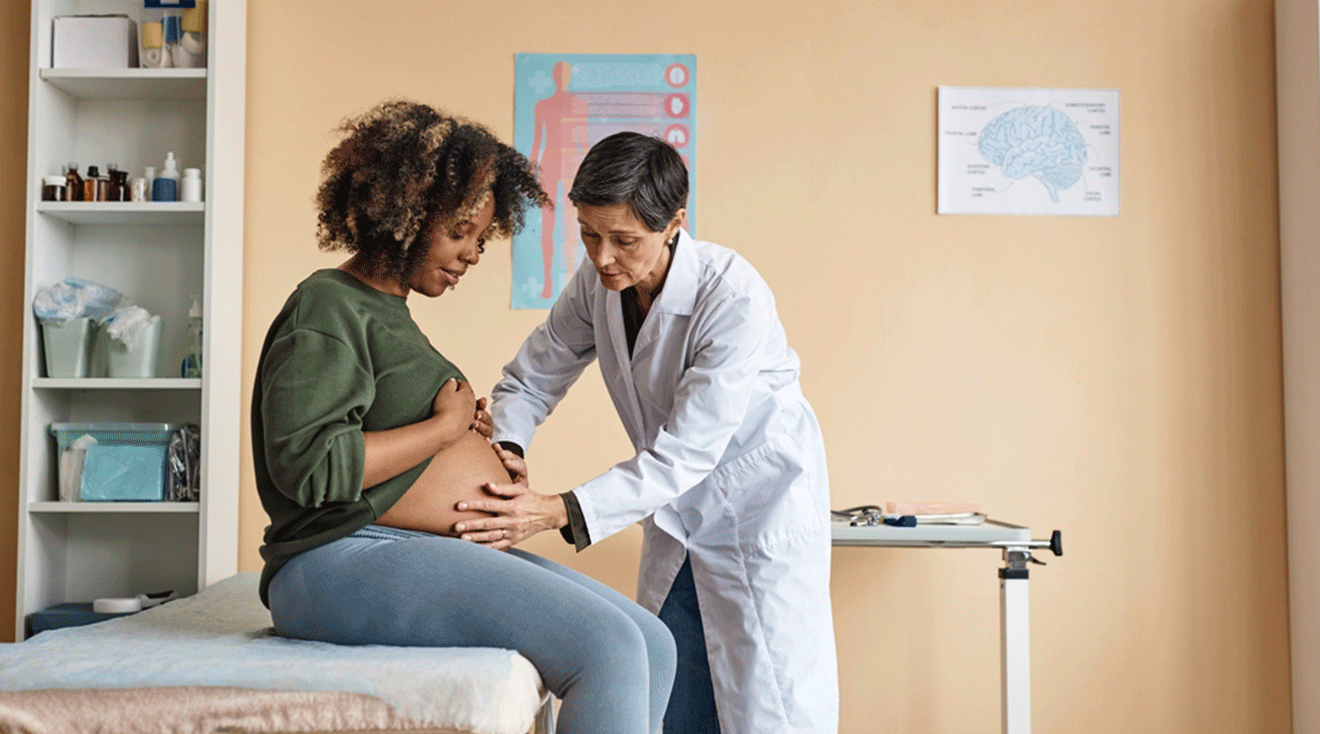What Is a Tilted or Retroverted Uterus?
If your provider told you that you have a retroverted uterus—also known as a tilted uterus—during one of your prenatal appointments, you’re not alone. Around 25 percent of people with uteruses have this common condition. But what are tilted uterus symptoms? And how does a retroverted uterus affect your pregnancy? Learn all the answers here, straight from experts.
A retroverted or tilted uterus tilts backward toward your spine, says Suzy Lipinski, MD, a board-certified ob-gyn and medical director at Obstetrix of Colorado, part of Pediatrix Medical Group. On the other hand, the majority of uteruses will point forward toward your stomach. “About 15 to 25 percent tip backward, which is like being left-handed—it isn’t wrong or bad, it’s just different,” Lipinski adds.
Yes, you can. A tilted uterus on its own typically doesn’t interfere with fertility. If you’re finding it hard to get pregnant, it could be due to other factors. That said, Lipinski suggests that conditions like endometriosis, fibroids or infections that ultimately contributed to your tilted uterus can interfere with fertility.
If you have a tilted uterus, most of the time it’s because you were born that way. But sometimes a tilted uterus can develop later in life due to other factors. Lipinski lists a few here:
-
Post-surgery adhesions or scar tissue. The healing process following surgery can cause your uterus to attach itself to other organs or heal in a completely different position, pulling your uterus backward.
-
Fibroids. Growths on the uterus, like uterine fibroids, can change the shape and position of your uterus, tilting it toward the spine.
-
Endometriosis. This condition can cause your uterus to form extra tissue that grabs on and attaches to other organs in your body, eventually tilting the uterus.
-
Pelvic infections. Just like scarring, pelvic infections can cause your body to heal in new positions, changing the angle of your uterus, says Cleveland Clinic.
The majority of people with a retroverted uterus have no symptoms, says Robert Lawler, MD, a board-certified ob-gyn in Oak Lawn, Illinois, with more than 20 years of experience.
But, of course, everyone’s different. Sometimes, the uterus can tip back a bit further than most, pressing onto the rectum area. This can definitely cause some uncomfortable feelings. Here are a few of the most common tilted uterus symptoms, according to Lipinski:
- Rectal pain
- Rectal pressure
- Backaches
- Pain with intercourse
- Intensified period aches and pains
A retroverted uterus is typically spotted in your routine pelvic exam during one of your first prenatal care visits. The big clue? Your provider will notice that your cervix is located more forward than usual. This is a positive sign you likely have a tilted uterus, says Lipinski. Plus, a retroverted uterus can also be diagnosed during an ultrasound, adds Lawler.
Here’s the good news: A retroverted uterus normally won’t affect pregnancy at all. As baby grows, your uterus will naturally change positions to line up with the birth canal, says Linda Feely, MD, a board-certified ob-gyn at OSF HealthCare in Galesburg, Illinois. This means as your pregnancy progresses, your uterus will start to bend away from your back and point more toward your stomach.
However, on rare occasions, a retroverted uterus with a more severe bend can become “stuck” under the sacrum, says Lipinski. This situation—which happens in around one in 3,000 pregnancies—is called an incarcerated uterus, and the main symptom is not being able to pee due to the intense pain and pressure. The fix? “A provider can press the uterus out from under the sacrum to free it—sometimes this has to be done under anesthesia,” says Lipinski.
A retroverted uterus doesn’t typically affect labor and delivery, experts say. Again, your uterus will likely move around and line up with the birth canal as pregnancy progresses, so it’s ready for action and in position by the time baby makes their big debut.
A retroverted uterus only needs treatment if it’s causing problems for you. In most cases, with a naturally occurring retroverted uterus, you won’t need treatment. But if the tilt was created by something else like scar tissue, fibroids or endometriosis, these special conditions may require some special treatment after pregnancy. Your provider will know what’s best and come up with a plan to help you find some relief.
Here’s something to keep in mind once you’re postpartum: “Sometimes the uterus can also tip after pregnancy due to a weak pelvic floor,” says Lipinski. If this is the case, both Lipinski and Feely recommend postpartum pelvic floor therapy to help strengthen your pelvic area.
In the vast majority of cases, having a retroverted uterus won’t affect your pregnancy. In fact, you probably won’t even notice it. However, if you have symptoms like rectal pain and pressure—or any other concerns at all—it’s a good idea to check in with your healthcare provider.
Please note: The Bump and the materials and information it contains are not intended to, and do not constitute, medical or other health advice or diagnosis and should not be used as such. You should always consult with a qualified physician or health professional about your specific circumstances.
Plus, more from The Bump:
Linda Feely, MD, is a board-certified ob-gyn at OSF HealthCare in Galesburg, Illinois. She received her medical degree from the University of Arizona College of Medicine in 2010 and specializes in family medicine and obstetrician-gynecologist services.
Robert Lawler, MD, is a board-certified ob-gyn in Oak Lawn, Illinois, with more than 20 years of experience. He’s also one of the medical directors at OSF HealthCare, overseeing labor and delivery, neonatology, and gynecologic surgeries at OSF Little Company of Mary Medical Center in Evergreen Park, Illinois.
Suzy Lipinski, MD, is a board-certified ob-gyn and medical director at Obstetrix of Colorado, part of Pediatrix Medical Group. She received her medical degree from the University of Iowa in 2004 and completed her ob-gyn residency at the University of Iowa in 2008. Before joining the hospitalist group, Lipinski enjoyed 12 years in private practice in Iowa and Colorado. She now primarily practices at Presbyterian-St. Luke’s Hospital.
Cleveland Clinic, Retroverted Uterus, July 2022
American Journal of Roentgenology, The Incarcerated Uterus: A Review of MRI and Ultrasound Imaging Appearances, June 2013
Learn how we ensure the accuracy of our content through our editorial and medical review process.
Navigate forward to interact with the calendar and select a date. Press the question mark key to get the keyboard shortcuts for changing dates.





















































